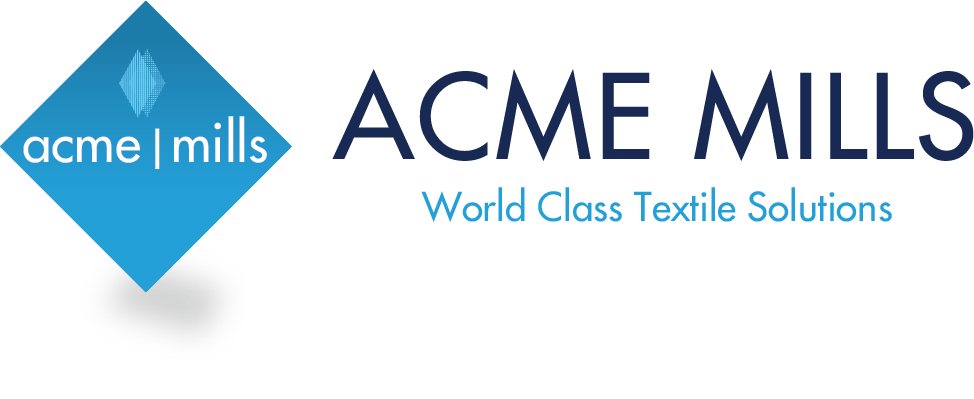Nonwovens do not depend on the interlacing of yarn for internal cohesion. Intrinsically they have neither an organized geometrical structure. They are essentially the result of the relationship between one single fiber and another. This provides nonwoven fabrics with characteristics of their own, with new or better properties (absorption, filtration) and therefore opens them up to other applications.
Introduction to Non-Woven Fabrics
Nonwovens are in fact products in their own right with their own characteristics and performances, but also weaknesses. They are around us and one uses them every day, often without knowing it. Indeed they are frequently hidden from view.
Nonwovens can be made absorbent, breathable, drapable, flame resistant, heat sealable, light, lint-free, mouldable, soft, stable, stiff, tear resistant, water repellent if needed. Obviously, though, not all the properties mentioned can be combined in a single nonwoven, particularly those that are contradictory.
Non-woven fabrics are made in two main ways: they are either felted or they are bonded. The fabrics use fibres rather than yarns; these are laid randomly or in a uniform way to make web-like layers. They are held together by either the felting or bonding process.
Felted Fabrics
Wool felt is the most common non-woven fabric and is produced by using short staple fibres from wool or other animal hairs (such as camel). Wool is an ideal fibre because its surface has natural hooks like scales, which when moisture, heat and vigorous movement are applied, interlock with each other. The heat and damp conditions cause the fibres to curl up, and the scales locking together prevents the fibres from straightening out again. When you wash a natural wool jumper and it shrinks in size the jumper is actually felting and you can’t make it bigger again no matter how hard you try to stretch it back.
Bonded Fabrics
There are three main methods of making bonded fabrics:
- Dry laid: a web of fibres is laid in a drum and hot air is injected to bond the fibres together.
- Wet-laid: a web of fibres is mixed with a solvent that softens the fibres and releases a glue-like substance that bonds the fibres together and then the web is laid out to dry.
- Direct spun: the fibres are spun on to a conveyer belt and glues are sprayed on to the fibres, which are then pressed to bond; if the fibres are thermoplastic (will change shape with heat) then the glue is not needed in this process.
Felted and bonded fabrics applications
Hats, jackets, toys and snooker table covers are some commonly used for wool felts.
Bonded fabrics are used for disposable products such as cloths, medical masks, and table linen. They are also used for interfacings for stiffening and strengthening clothing and dressmaking (e.g. Vilene).
Laminated Fabrics
Laminated fabrics are made by bonding two or more fabrics together. Many fabrics require extra insulation or protection, and the foam is bonded to provide this. Sometimes comfort can be an issue with PVC fabrics, so a softer fabric may be bonded instead of using a lining. Making a fabric breathable and waterproof may require lamination of a membrane, as in Gortex and Sympatex.
Nonwoven fabrics are products made of parallel laid, cross-laid or randomly laid webs bonded with the application of adhesive or thermoplastic fibers under application of heat and pressure.
Applications of Non-Woven Fabrics
-
Personal care and hygiene
baby diapers, feminine hygiene products, adult incontinence items, dry and wet pads, but also nursing pads or nasal strips, bandages and wound dressings
-
Healthcare
like operation drapes, gowns, and packs, face masks, dressings and swabs, osteomy bag liners, isolation gowns, surgical gowns, surgical drapes and covers, surgical scrub suits, caps
-
Clothing
interlinings, insulation and protection clothing, industrial workwear, chemical defence suits, shoe components, etc.
-
Home
wipes and dusters, tea and coffee bags, fabric softeners, food wraps, filters, bed and table linen, etc.
-
Automotive
boot liners, shelf trim, oil and cabin air filters, moulded bonnet liners, heat shields, airbags, tapes, decorative fabrics, etc.
-
Construction
roofing and tile underlay, thermal and noise insulation, house wrap, understanding, drainage, etc.
-
Geotextiles
asphalt overlay, soil stabilization, drainage, sedimentation and erosion control, etc.
-
Filtration
Hevac, Hepa, Ulpa filters, gasoline, oil, and air – including HEPA filtration, water, coffee, tea bags, liquid cartridge and bag filters, vacuum bags, allergen membranes or laminates with non-woven layers
-
Industrial
cable insulation, abrasives, reinforced plastics, battery separators, satellite dishes, artificial leather, air conditioning, coating.
-
Agriculture, home furnishing, leisure and travel, school and office
soil stabilizers and roadway underlayment, foundation stabilizers, erosion control, canals construction, drainage systems, geomembranes protection, frost protection, agriculture mulch, pond and canal water barriers, sand infiltration barrier for drainage tile
Origin and Advantages of Non-Wovens
The origins of nonwovens are not glamorous. In fact, they resulted from recycling fibrous waste or second quality fibres left over from industrial processes like weaving or leather processing. They also resulted from raw materials restrictions e.g. during and after the Second World War or later in the communist-dominated countries in Central Europe. This humble and cost dominated origin of course lead to some technical and marketing mistakes; it is also largely responsible for two still lingering misconceptions about nonwovens: they are assumed to be (cheap) substitutes; many also associate them with disposable products and for that reason did consider nonwovens as cheap, low quality, items.
Not all nonwovens end in disposable applications. A large part of the production is for durable end-uses, like in interlinings, roofing, geotextile, automotive or floor covering applications etc. However, many nonwovens especially light-weight ones are indeed used as disposable products or incorporated into disposable items. In our view, this is the ultimate sign of efficiency. Disposability is only possible for cost-efficient products that concentrate on the essential required characteristics and performances and provide them without unnecessary frills.
Most nonwovens, disposables or not, are high-tech, functional items, e.g. with ultra-high absorbency or retention for wipes, or with softness, strike-through and no wetback properties for those used into hygiene articles, with outstanding barrier characteristics for medical applications in the operation room, or better filtration possibilities because of their pores dimension and distribution, etc. They weren’t manufactured with the aim of disposability but in order to fulfil other requirements. They mainly became disposable because of the sectors they are used in (hygiene, healthcare) and of their cost efficiency. And disposability very often creates an additional benefit to the users. As disposable items have never been used before, there is then a guarantee that they do possess all the properties required as opposed to reused laundered fabrics.
New technology in non-woven fabrics
Non-woven fabric production such as felting and bonding is often used by manufacturers when producing fabrics with some of the new vegetable-based yarns, as these tend to have shorter staple fibres.
Designers are able to design their own original fabrics with the felting method. The industrial application of non-woven fabrics is ever-increasing and includes filtration systems, medical used and insulating purposes.
The development of micro-encapsulation technology (enabling active substances to be fixed to the surface of the fibre or fabric) means many non-woven fabrics can be perfumed or anti-bacterial. Newer fibres like Lyocell can be made into non-woven fabrics, giving better absorption and high wet strength for products such as medical swabs.









